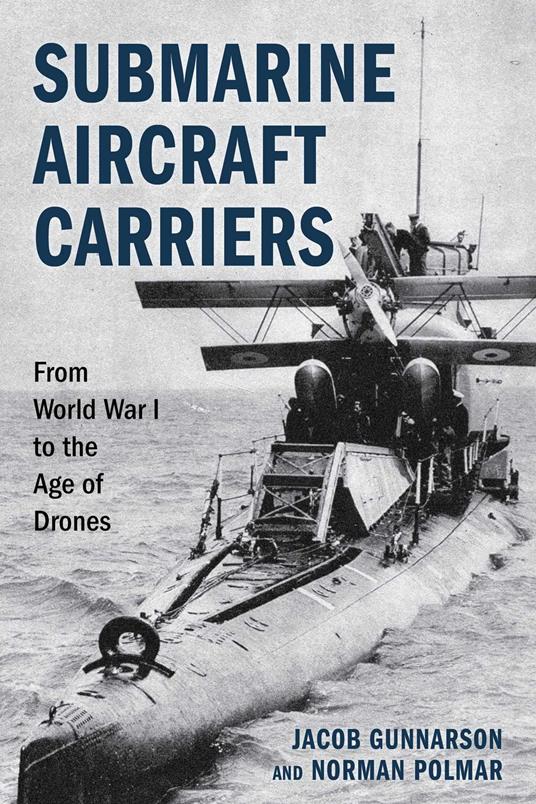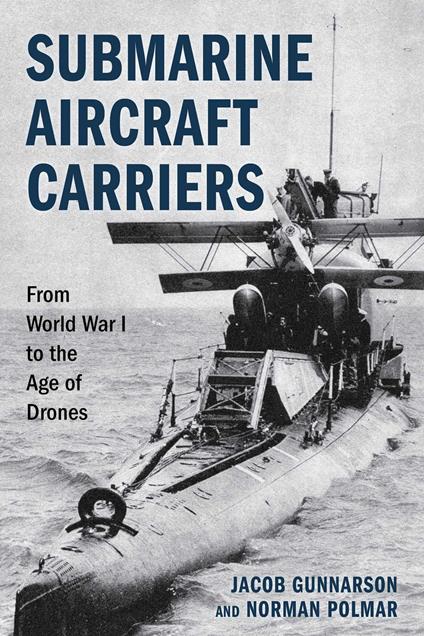Submarine Aircraft Carriers
Two innovations in weaponry appeared at the beginning of the twentieth century and revolutionized warfare, turning it into a multidimensional contest: the modern diesel-powered submarine and the fixed-wing aircraft. Both saw extensive use during World War I, and the nations of the world soon developed mobile launching pads for planes during and after the war, first using surface ships and then submarines. The submarine aircraft carrier was born. Virtually nothing has been written about these weapons—until now, in this detailed narrative by one of the world’s leading naval experts. Submarine aircraft carriers were pursued by all of the world’s major naval powers: the United States, Great Britain, Germany, France, Italy, Japan, and the Soviet Union. Germany led the way, and while its efforts did not put vessels into battle during World War I, rumors of such a submarine caused widespread panic in New York City in 1918. Despite concentrated efforts during the 1920s and 1930s, only Japan and France had seagoing submarine aircraft carriers when World War II erupted. France’s single such vessel disappeared at sea in 1942, but Japan built forty-seven, including three of its massive I-400 class, the largest submarines of World War II. Japanese submarine aircraft carriers launched the only aerial bombing of the contiguous United States, when a sub-based plane dropped bombs over Oregon. The three I-400s figured prominently in Japan’s never-realized plans to attack the Panama Canal, New York City, and Washington, DC, as well as in Operation Cherry Blossoms at Night, Japan’s last-ditch plan to spread bubonic plague and other pathogens to the coastal cities of California. After World War II, both the United States and the Soviet Union pursued further development of submarine aircraft carriers as part of their nuclear strike capabilities—including some fanciful ideas for truly gigantic submarines launching bomber aircraft—but the advent of guided cruise missiles quickly ended interest in these vessels. In this comprehensive and readable history, Jacob Gunnarson and Norman Polmar draws on more than sixty years of researching and writing about the world’s naval vessels to uncover the development of submarine aircraft carriers. Their story reveals much about twentieth-century naval strategy, tactics, and technology.
-
Autore:
-
Anno edizione:2025
-
Editore:
-
Formato:
-
Lingua:Inglese
Formato:
Gli eBook venduti da Feltrinelli.it sono in formato ePub e possono essere protetti da Adobe DRM. In caso di download di un file protetto da DRM si otterrà un file in formato .acs, (Adobe Content Server Message), che dovrà essere aperto tramite Adobe Digital Editions e autorizzato tramite un account Adobe, prima di poter essere letto su pc o trasferito su dispositivi compatibili.
Cloud:
Gli eBook venduti da Feltrinelli.it sono sincronizzati automaticamente su tutti i client di lettura Kobo successivamente all’acquisto. Grazie al Cloud Kobo i progressi di lettura, le note, le evidenziazioni vengono salvati e sincronizzati automaticamente su tutti i dispositivi e le APP di lettura Kobo utilizzati per la lettura.
Clicca qui per sapere come scaricare gli ebook utilizzando un pc con sistema operativo Windows



